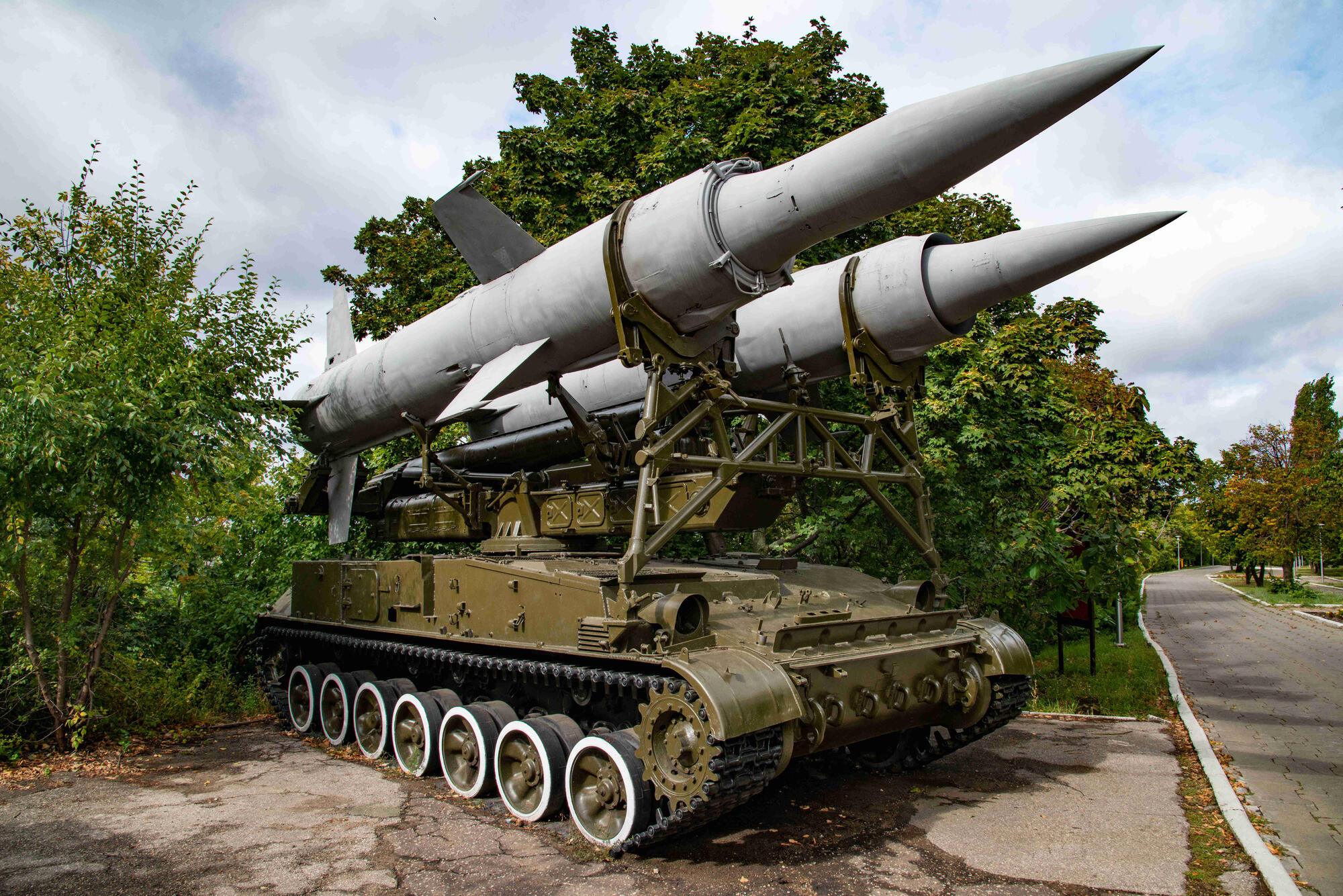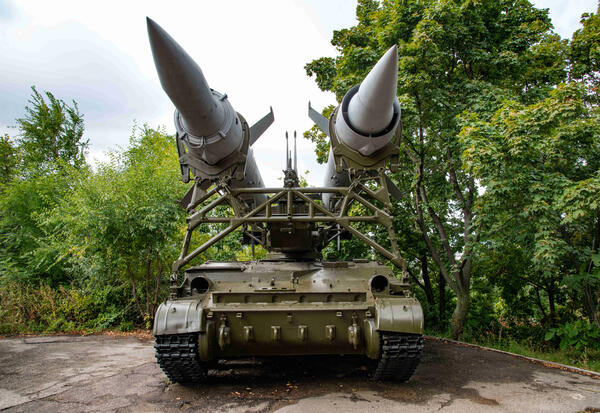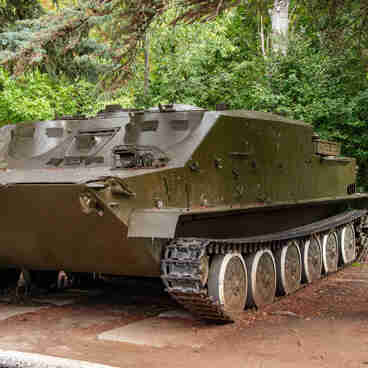The 2P24 self-propelled launcher with the 2K11 Krug anti-aircraft missile system was developed at the design bureau of the Ural Plant of Transport Engineering. It entered service in 1964.
The 2P24 was developed on the basis of the SU-100P self-propelled howitzer. It was protected by solid steel armor with a thickness of up to 15 mm. In terms of layout, like the standard self-propelled artillery vehicles, the 2P24 was fitted with the engine and transmission compartment at the front.
For maintenance, the engine and transmission units of the launcher could be accessed through the removable armor plates on the roof. The chassis of the 2P24, on each side, included seven double-pitched support rollers with external shock absorbers and four rubberized support rollers.
The guide wheels were positioned at the back, the driving wheels at the front. The support rollers had independent torsion suspension. Two front and two rear suspension attachment points were equipped with spring travel limiters. Its special caterpillar ensured a longer service life while driving on abrasive soils.
The vehicle was armed with two 3M8 anti-aircraft guided missiles. Each of them had a ramjet engine and four solid-fuel launch boosters. They separated at the initial stage of the flight.
The two-stage guided missile had a controllable-tail aerodynamic configuration. It had a high-explosive fragmentation warhead weighing 150 kg. The warhead exploded as the non-contact radio-controlled fuse detonated at a distance of less than 50 m from the target.
The weight of the rocket at launch was 2455 kg. The length of the rocket was 8436 mm, diameter — 850 mm. The average flight speed was from 800 to 1000 m/s.
The rocket had easily removable wings and stabilizers. It was transported by and fired from the 2P24 launcher, which was equipped with tracking devices. They worked by receiving data from the 1S32 guidance station. In addition, data on the readiness of the missiles for launch was sent from the launcher to the guidance station. About 1000 2P24 launchers were manufactured during serial production.
The 2P24 was developed on the basis of the SU-100P self-propelled howitzer. It was protected by solid steel armor with a thickness of up to 15 mm. In terms of layout, like the standard self-propelled artillery vehicles, the 2P24 was fitted with the engine and transmission compartment at the front.
For maintenance, the engine and transmission units of the launcher could be accessed through the removable armor plates on the roof. The chassis of the 2P24, on each side, included seven double-pitched support rollers with external shock absorbers and four rubberized support rollers.
The guide wheels were positioned at the back, the driving wheels at the front. The support rollers had independent torsion suspension. Two front and two rear suspension attachment points were equipped with spring travel limiters. Its special caterpillar ensured a longer service life while driving on abrasive soils.
The vehicle was armed with two 3M8 anti-aircraft guided missiles. Each of them had a ramjet engine and four solid-fuel launch boosters. They separated at the initial stage of the flight.
The two-stage guided missile had a controllable-tail aerodynamic configuration. It had a high-explosive fragmentation warhead weighing 150 kg. The warhead exploded as the non-contact radio-controlled fuse detonated at a distance of less than 50 m from the target.
The weight of the rocket at launch was 2455 kg. The length of the rocket was 8436 mm, diameter — 850 mm. The average flight speed was from 800 to 1000 m/s.
The rocket had easily removable wings and stabilizers. It was transported by and fired from the 2P24 launcher, which was equipped with tracking devices. They worked by receiving data from the 1S32 guidance station. In addition, data on the readiness of the missiles for launch was sent from the launcher to the guidance station. About 1000 2P24 launchers were manufactured during serial production.




